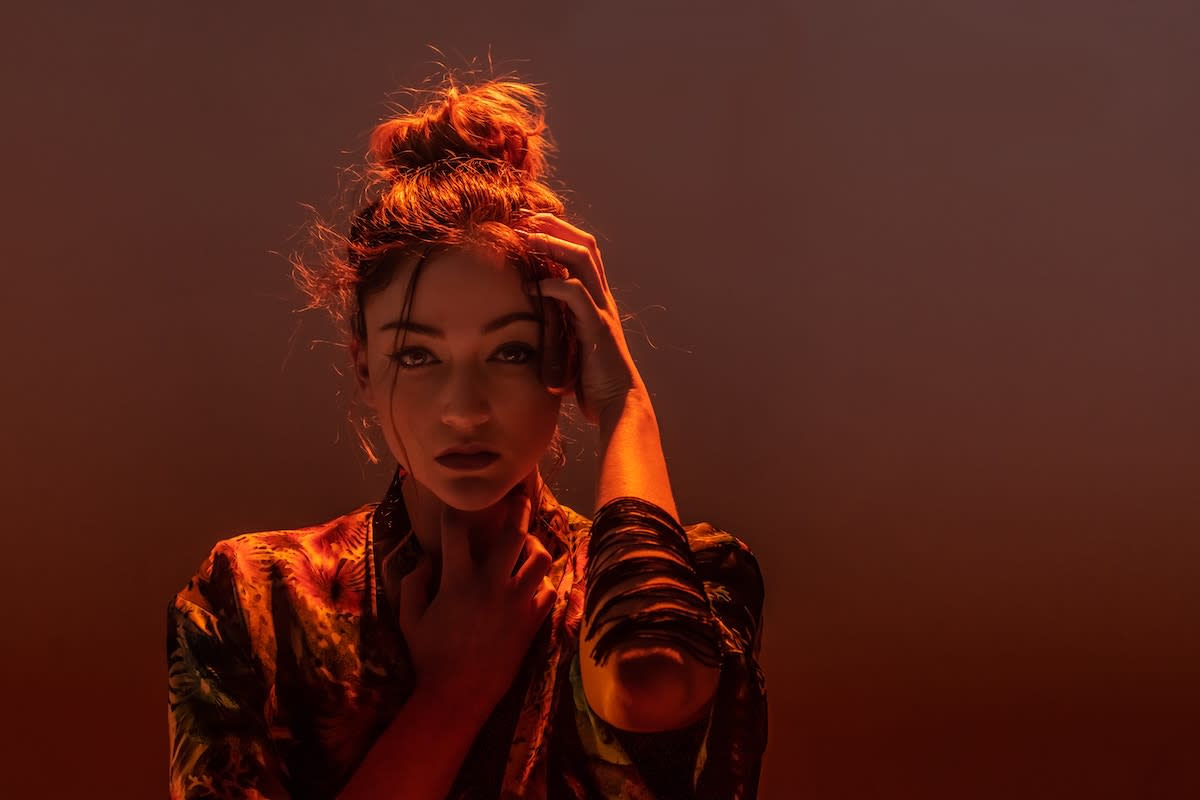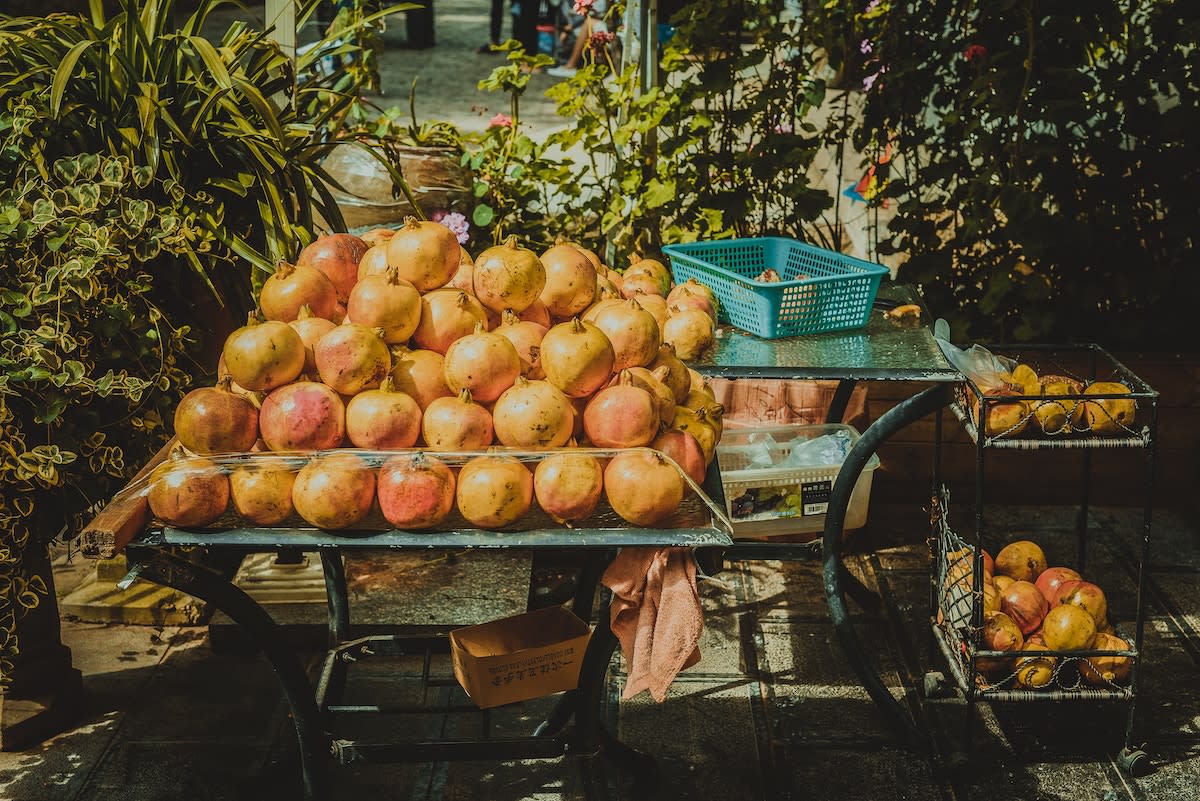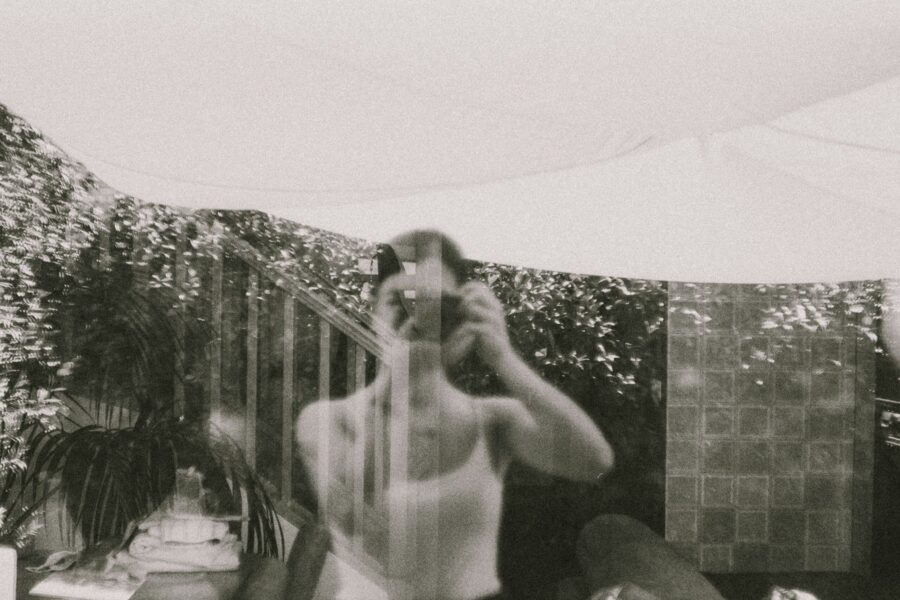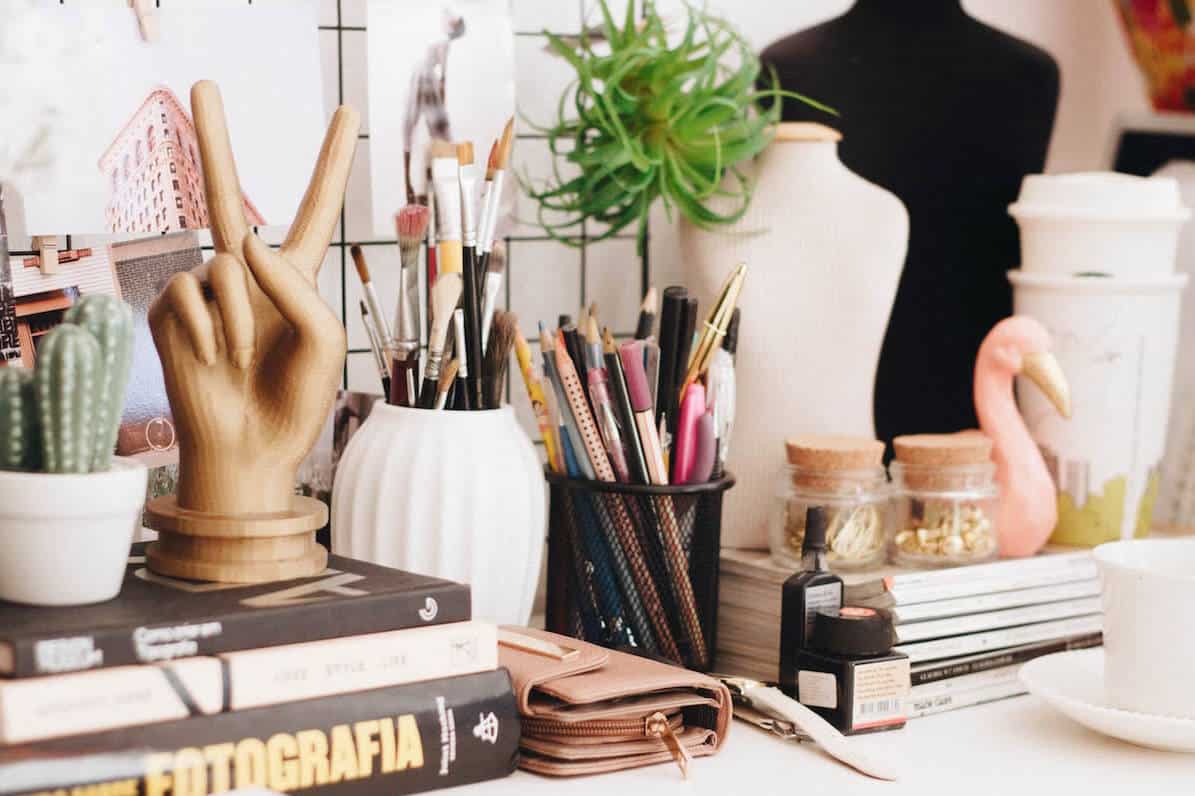So you’ve tried many different types of photography—but now, maybe, you want to spruce up your portfolio with something new.
If you haven’t already, you might want to try your hand at fine art photography. It’s a great way to get creative and express yourself. You can create some captivating and thought-provoking images that will draw people to your fine art online photography portfolio and show them that you are a true artist.
But whether you’ve never tried it before, or you’re just not sure if your shots are up to snuff yet, we can help. Use our guide to take your fine art photos from so-so to stunning!

What is Fine Art Photography?
It can be tricky to put your finger on a fine art photography definition that everyone will agree with. For instance, there’s often a fine line between commercial photography and photography in fine art. There are also conflicting definitions on how to do fine art photography that make it even harder to nail down what constitutes a fine art photo. But let’s give it a shot.
Artistic Photography Starts With a Vision
One way fine art photography is distinct from commercial or photojournalism is that it’s not always resentational, rather symbolic.
A definition of fine art photography involves bringing a vision, emotion, or a state of mind to life through a photographed image. It involves creating something that previously only lived in your mind, as opposed to simply capturing what you see in an artistic way. It’s a way to express your emotions and the way you see the world—and share it with others.
That means when you’re preparing for a fine art photoshoot, you should already have some sort of concept in mind. Whether that’s a detailed plan or just a vague idea, it’s an important starting point for creating fine art photography.
Fine Art Photography Is About Beauty and Meaning
Another definition is that, as opposed to other forms of photography, fine art is meant to be judged solely for its beauty and meaningfulness—two things that are very subjective. That means it’s unrestricted by practical considerations and it can break the usual rules of photography.
For example, a fine art photo might be completely out of focus. While that would be seen as a technical error in most photography circles, fine art photography is different. It can involve surreal or abstract subjects, creative editing, and breaking composition rules.
The main goal isn’t to demonstrate your technical skills. Instead, it aims to express an idea, an emotion, or a message.
Visual Art Photography Is Created Carefully
One thing’s for sure: fine art photos are not candid snapshots. Every fine art photo involves a lot of planning and tweaking. Between the composition, details, and meaning, these images are created as carefully as paintings.
So, as you can see, it’s a bit complicated. To help you get a better grasp of what fine art photography is, you should check out some examples from these fine art photographer websites.
Next, we’ll cover some fine art photography tips that will help you get started.

Find Some Inspiration
Now that you have a better idea of what fine art photography is, you may be itching to get started. So, what’s your vision? What message or emotion do you want to convey? And how exactly are you going to do that? Those can be difficult questions to answer.
To get the ball rolling, here are some suggestions for finding inspiration.
Clear Your Head
If you’re struggling to come up with fine art photography ideas, it can be useful to take a step back and focus on something else. Get away from your usual surroundings, do something with a friend, go on a trip, watch movies—whatever you like to do that refreshes your mind. Taking your mind off of your creative block and just seeking out experiences can be a great way to spark some inspiration. (Need more ways to unplug? Our guide to self-care for artists has some great ideas.)
Look to Other Photographers
Typically, when it comes to art, it’s a good rule of thumb not to follow others in case you accidentally copy their work too closely. With your fine art photography, you should be striving to create an authentic personal vision. So you shouldn’t pay attention to what’s trendy or let fads drive your art. However, as a learning method, it can be useful to take inspiration from others. If there are famous fine art photographers who you admire, you could follow their style, read books to understand their creative process, or start with a similar subject to get your creative juices going—Just make sure it doesn’t stop you from developing a personal style along the way. Once you’ve found a style or subject that you like, experiment with it and try to take it down different paths. Combine the subject with your own life experiences to make it more personal.
For more help getting inspired, take a peek at these guides:

Equipment for Fine Art Photography
The required equipment is another area where fine art photography differs greatly from other genres. That’s because you don’t need much. You could get started with whatever camera you have handy. Some artists enjoy shooting in film, while others prefer the flexibility in post editing when working with a DSLR camera. The medium and creative process is in your hands.
It’s All About How You Use it
Since creativity and artistic vision are more important than the technical aspects of your photos, there’s no need to buy the latest gear.
If you need convincing, just consider the long history of fine art photos taken with basic equipment. In fact, many features on the latest cameras won’t be much help when it comes to fine art photos.
For example, features that are aimed at making it easy to shoot, like autofocusing and auto exposure, can actually take away from a fine art photo. Instead of using those auto settings, you should experiment with the manual settings and see if they can help you achieve your vision.
Get Yourself a Tripod
One piece of gear that you should invest in is a tripod. A tripod can provide more opportunities to get creative. It allows you to do things like shooting with long exposures or creating HDR images. Besides that, it makes things much easier when you are carefully setting up your composition.
Next, we’ll go through some of the different categories of fine art photography, and provide some tips to help you hit the ground running.
Fine Art Portrait Photography Tips
When you’re trying to create fine art, you can throw some of the usual portrait photography guidelines out the window. For example, you don’t need to make the subject’s face visible. Their head could be turned away from the camera or not even included in the frame.
That’s one of the great things about fine art photography: you have complete freedom. But that also means it can be hard to know where to start. Here are some tips and ideas that may spark inspiration for your fine art portrait photography.

Know Your Models
One important tip is to make sure your models are comfortable. Sure, this is true for any type of portrait photography. But it is especially important when it comes to fine art photoshoots. That’s because you are going to need them to work closely with you and perhaps express some vulnerability to bring your vision to life. The photoshoot will take some time and may involve a lot of experimentation.
Instead of their tried and true poses, you may want to ask them to do something unusual. Models who excel at this type of photography tend to also be excellent performers such as dancers or actors, who understand how to embody an emotion on their face and body movements.
So, to make things go smoother, make sure you get to know your models first. If you are first meeting them on the day of the shoot, take the time to have a quick meeting with them before you get started.
Also, if you know some poses that you’d like them to try, consider bringing some visual aids like a moodboard to help them understand what you are looking for.
Keep it Simple
Try shooting your fine art portrait photography against a plain background.
This avoids distractions and puts all of the focus on your subject. It should help you experiment with conveying your message through the subject alone. You’ll be forced to find more interesting perspectives, get the subject to strike a pose, or get creative with things like makeup, costumes, props, or lighting.
Find a Location with Meaning
Alternatively to the idea above, you could put more focus on the location and use it to help convey your message. It could be a spot with interesting architecture, beautiful natural lighting, or a location where your subject looks out of place. Some locations can bring a lot of significance, like how including a church in the background would carry more significance than a non-identifiable building. In this way, a location can help add meaning to your photography art.
Try Some Self-Portraits
If you don’t have models to work with or would just be more comfortable experimenting on your own, consider trying some self-portraits. Besides giving you more control over your fine art portrait photography by doing everything yourself, self-portraits can make a great addition to your online portfolio website.
That’s because they give people a chance to see the artist behind all of those great fine art photos. This can help you forge a connection with your audience and potential buyers.
This list of cool self-portrait ideas can help you get started.

Fine Art Black and White Photography Tips
When looking at examples of fine art photography, you may have noticed that black and white photos are a popular choice. And with good reason!
Black and white photos can be very powerful and dramatic or lend a timeless feel to your work. They put more emphasis on light, contrast, and texture, which may help you convey the emotion or message that you’re going for. Here are a few tips to make your fine art black and white photography the best it can be.
Think in Black and White
As mentioned above, when your photos lack color, there will be more focus on elements such as lighting and contrast. So you’ll need to take that into account when planning your composition. Look for subjects or locations with a mix of bright and dark elements, and play with your exposure settings to bring out more contrast.
Shoot in Color
Rather than shooting in a B&W mode on your camera, you should shoot in full color and convert the image in editing. Shooting in color is a good idea because it gives you more options for adjusting your image in post processing. There are multiple ways of converting to black and white, so handling it in editing lets you experiment, make more tweaks, and find the best method for your image.
If you are having trouble visualizing the scene in black and white, many cameras will let you shoot in RAW and JPEG formats simultaneously. Then you can use a monochrome “picture style” or “film simulation” mode to see how the image will look in black and white while still capturing the full-color information.
Spend Some Time Tweaking
During editing, there are a number of things you can do to adjust the contrast in your black and white images and achieve different moods with your photos. For example, in Photoshop you can use both the “levels” and “curves” adjustments to tweak the tonal balance.
In addition, Adobe Camera Raw offers the ability to adjust the brightness of eight different colors in the HSL/Grayscale tab. This enables you to take any of those colors from completely white to black. It can be used to dramatically change the look of your image or achieve artistic effects.
For some inspiration, visit these fine art photography sites that feature black and white photography.

Fine Art Landscape Photography Tips
Another genre that you can experiment with is fine art landscape photography. Whether it’s a misty mountain, a bright seascape, or a dark forest, landscapes can inherently convey mood and meaning. But you should remember that fine art photography is about interpreting your surroundings as opposed to simply observing and capturing the world representationally.
While you might find the perfect location for a beautiful landscape photo, you shouldn’t stop there. To elevate your work into fine art territory, you should find ways to get creative and add a narrative to your landscape compositions.
Here are some ways to do that.
Create a Narrative
When shooting landscapes, you won’t have as much control to set up the scene as you would with a portrait. So in order to add meaning to your photos, you’ll have to search out things that can help you tell a story.
For example, finding a sapling to use in the foreground contrasted with a dead tree in the background can evoke thoughts of death or rebirth. Shooting a lone flower in a field can help you convey feelings of isolation or resilience. As you can see, there are different stories you can tell using the same elements.
Through your composition, lighting, and editing techniques, you can steer the mood of the photo in the direction you want.
Create an Unnatural Look
Experiment with color during the editing process. For example, try color-correcting to create unnatural tones. Purple skies, yellow grass, red trees—whatever. Seeing natural subjects with unnatural colors can create a captivating otherworldly feeling. This is one way to help make a landscape your own.
Use Negative Space
Negative space is a wonderful tool in landscape photography to focus the viewer’s attention exactly where you want it. While photography students are often told to fill the frame, including negative space can help avoid distractions and make the meaning of your photos more apparent. So don’t be afraid to work with the empty sky, still water, or snow-covered ground.
For more ideas, scope out our awesome landscape photography tips.

More Types of Fine Art Photography to Try
The genres of fine art photography listed above are just the beginning. There are many types of photography you can turn into fine art by using them to create images that convey meaning.
If you want some more ideas for types of photography to try, take a look at these guides:
Get Some Support with Art Grants
When you’re focused on creating meaningful fine art photography, it’s difficult to make a steady income off of it. As opposed to when you’re working on commercial photography, you won’t be focused on finding what sells and making a quick buck. Instead, you’re in it for the long haul.
You may have aspirations that one day your work will sell for big bucks. But that still means there will be stretches when you’re not earning anything from your fine art photos.
In addition to holding down a day job, there’s something else you can do to support yourself while you are working on your masterpiece: apply for an art grant.
How to Get a Grant
If you’ve never looked into it before, you’ll probably be surprised by how many organizations and government incentives offer art grants. These organizations recognize the importance great art has in society and will put up significant amounts of money to help artists develop their craft.
The trick is having a great portfolio to show application committees that you’re worth it. Another important step is learning how to write an artist grant application.
When you’re ready, use this list of amazing art grants to find one that works best for your particular craft.

Fine Art Photography Training
One way to take your fine art photography to the next level is to seek out some training. That can include free online courses, photography workshops, or a full-fledged art school. Any of these options can help. Whether it’s learning photography skills you can use creatively for your fine art photos, or studying art to help find inspiration and the direction with your photography art.
If you choose the latter option, you’ll want to make sure you have a great portfolio for when you apply. Art and design schools usually judge prospective students on a variety of materials, like artist statements, interviews, and written tests. But your portfolio is one of the most important aspects. It can show people your talents, creativity, and development as an artist.
So if you want some tips, check out this guide on how to make a photography portfolio for college and university.
How to Price Your Fine Art Photos
Understanding the business of fine art pricing can be challenging, and it’s not as straightforward as your typical commercial or freelance photo packages prices.
Look around at exhibitions and fairs of other artists’ work similar to yours to get a gauge on where your fine art photography lies in the market, given your level of expertise and your geographic location.
It’s important that you don’t undervalue your work, as it reflects poorly as the fine art photography community as a whole. It can be tempting to sell your artwork at a much cheaper price in order to sell out a collection, but you want to maintain the integrity of your work and that of your community. Don’t be afraid to ask colleagues, galleries, and other artists about fair prices for your art prints.
At the minimum, you want to consider the time, materials involved, and the printing costs and double the amount it—but there aren’t any straight forward rules to selling fine art photos.
If you’re being commissioned for a fine art photoshoot, you may want to consider creating a package. Let’s get you started with some fine art photography package examples and how to price a portrait photography package.
- Understand your market. Do your market research and look into what your customers might want in a fine art portrait session. For example, how many photos, outfit changes, and will you be printing these photos?
- Don’t overdo your offers. Try to keep your packages simple and stick to 2-3 motions. The more complicated your packages, the more confusing and intimidating it may be to work with you.
- Price based on value. Rather than only accounting for your time and equipment for the photoshoot, consider the value you deliver for your clients. This can be tricky to determine, but you can factor in your length of experience, where these photos will be used, and your reputation as an artist into the price.
How to Get Your Work into Galleries
Getting your fine art photography prints shown in an art gallery can be a real feather in your cap. It’s an accomplishment that shows people you have talent and it can lead to big sales as the gallery exposes your work to new buyers.
To make it happen, you’ll have to make sure fine art photography galleries and curators are aware of your work. Here are some tips on how to do that.
Participate in the Local Art Community
Keep an eye out for art shows and gallery openings near you, and attend as many as you can. While there, try to introduce yourself to gallery owners, curators, and artists. In addition, pay attention to the type of work they’re showing in your local galleries since sometimes curators and galleries show a specific taste in the work they choose to exhibit.
Also, keep an eye open for local art and craft fairs, as they can be a great way to gain experience selecting work, framing, pricing, and promotion.

Make Connections with Other Artists
Try to build relationships with your fellow artists. You can find them on social media through Facebook groups or through a local art council. Once you make a connection with other artists, collaborate and cross-promote with them. By working together, you can expose your work to each other’s followers. It’s a real win-win scenario.
Enter Art Contests
Winning an art contest can help you get noticed.
Competition organizers tend to do a great job promoting their winners (as well as honorable mentions), which can help get you on the radar of people in the art community.
In addition, it’s an accolade that you can proudly show off on your online portfolio. The fact that your work was chosen above the other applicants’ submissions is a sign that you have some talent and dedication.
Build a Great Portfolio
Building a great online portfolio is an important step towards getting your fine art photos shown in a gallery. It’s a place where people will go to see your work and decide if it’s ready for an exhibition.
Show Off Your Fine Art Photography Online
Once you have a collection of fine art photography work, you should feature it in your online photography portfolio. Your portfolio is like your own personal art gallery where you can show off your best work exactly the way you want.
Unlike social media platforms, you have more control over the visitor’s experience when they land on your site. Plus, you don’t have to fight with algorithms to be seen. Building a search-engine optimized website can actually bring prospecting clients to you.
Choose the Right Platform
If you don’t yet have an online portfolio or are unhappy with your current one, it’s easy to make a new one as long as you choose the right website builder.
Most website builders have templates that allow you to customize them without knowing a lick of code. This means you can get your website up in a matter of hours on your own and can make changes as your photography evolves.
Look for one that has an online store built right in. This makes it easy to sell your fine art photography prints directly from your website, which means you get to keep 100% of the profits from any sales.
And, if you choose a website builder that offers a free trial, you can see if it works for you before making any commitment.
Find Inspiration for Your Site Design
If you’re not sure what your fine art photography site should look like, there are plenty of great examples that can give you inspiration. Visit the sites of some famous fine art photographer and see how they handle it.
How many photos do they include? How is the site navigation set up? What is their artist bio like? Do they include an artist statement? These are all things that can help guide you.
Find out more in our guide on how to build a photography website.
Start Shooting!
Hopefully this fine art photography guide gave you some insights and tips into diving into a brand new world of photography, that will develop your craft and perhaps start a new career.
You’ve learned some fine art photography techniques for upping your game, some ways to get your work marketed, and how to work towards getting your photography art shown in a gallery.
So, what are you waiting for? Grab your camera, get out there, and start creating some amazing fine art photography!
Want to learn more ways to improve your photography?
Key Light Photography: A Beginner’s Guide
A Beginner’s Guide to Buying the Right Photography Equipment
23 Photography Blogs To Bookmark Right Now












